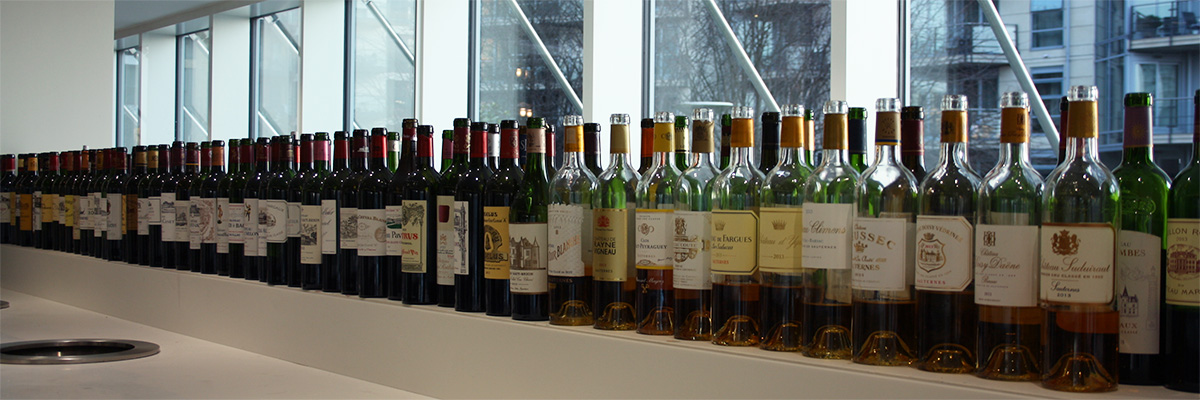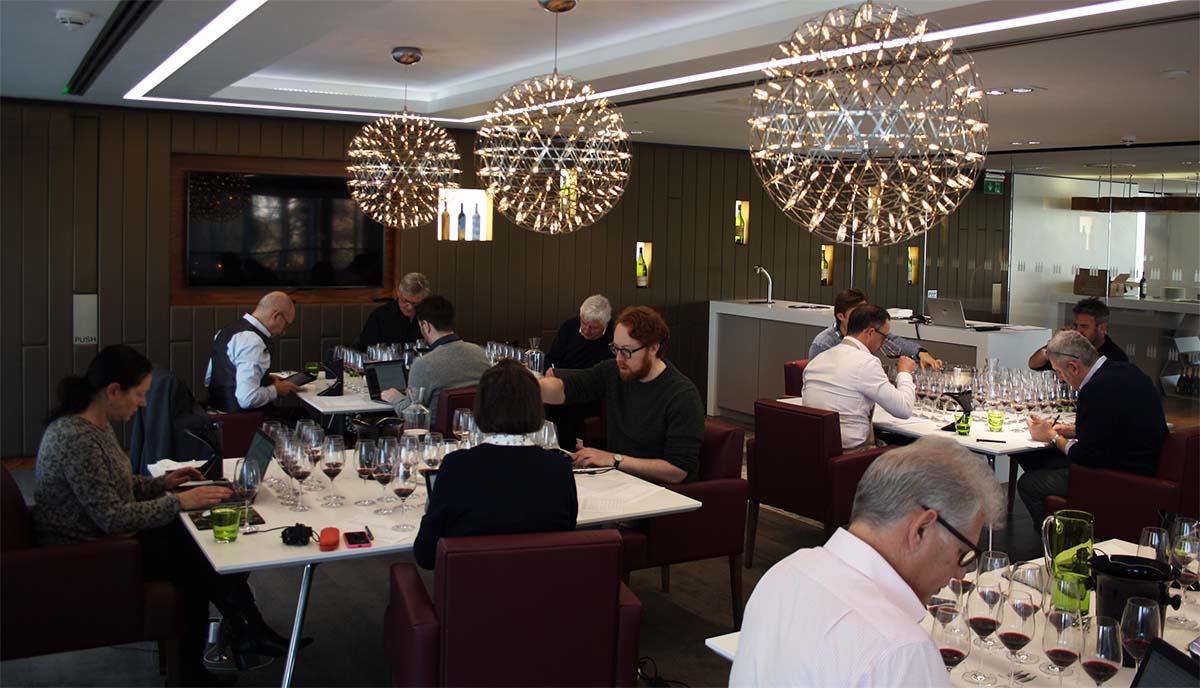
The annual “Ten Years On” blind tasting took place in February this year, three weeks after the magnificent 2019 Southwold tasting. The two tastings could not have been more different, and we arguably went from the very best of Bordeaux to the worst.
This tasting group has run for several decades, and I have now participated eleven times. It takes place at Farr Vintners’ bespoke tasting room in Battersea overlooking the River Thames, with the wines tasted blind in peer groups. We know which wines will be in each flight, but, of course, not the order. The group includes writers, assembled buyers from the most respected UK Wine Merchants and a high proportion of MWs.
2013 was written off from the beginning. Awful weather from budburst to harvest left little room for the Bordelais to talk up the vintage; indeed several producers discussed whether making wine would have been possible at all without the technical advancements made since the 1990s. From barrel, and again from bottle at Southwold, the wines struggled. At Farr Vintners, we advised customers not to buy the wines unless an anniversary, birth or other reason meant some intrinsic need to have them - there were and are so many high quality vintages available in recent years that it really was difficult to see a reason to buy. Even with my marriage in 2013, I avoided making any purchases either on release or since. At Southwold we hoped for some gems, but the tasting only confirmed our initial beliefs. Now, at 10 years old, we were hoping to find at least a few winners.
Given the reputation of the vintage we limited the flights to the bigger names in each appellation this year, keeping our palates and minds fresh in the hopes of finding some diamonds in the rough. Unfortunately, things did not get off to a great start with a very mixed bag of Saint Emilions. At the time the wines were made, heavy ripeness and extraction were still the norm for many, and concentrating a vintage with poor raw materials was never going to be a recipe for success. Ausone lifted its head clear above the rest, but the bar was undeniably low.
Pomerol was much the same, with Eglise Clinet achieving impressive balance and depth for the vintage to come out on top, with Lafleur and Pétrus just behind. A mention is deserved for Les Cruzelles, which beat many illustrious wines at a fraction of the price - the late, great Denis Durantou clearly demonstrating his dedication in the vineyard and expertise in the cellar.

The story was the same on the left bank, with quality as low as we expected throughout. In Pessac-Léognan, Haut Brion rose above its stablemate La Mission, with Smith Haut Lafitte in a valiant third place thanks to carefully judged sweet oak to prop up its fruit. Château Margaux was the top Margaux, with a surprising second place for Prieuré Lichine, besting the more famous names with a balanced wine that showed admirable fruit and length.
Saint Julien is often the flight where tasters relax and admire the consistency and quality, where gems are often found and noises of approval resonate through the otherwise silent tasting. This was, however, the most disappointing set of wines I have ever tasted from the appellation, which was similarly the case for those tasters who have taken part in the Ten Years On group since its inception. Saint Pierre's spicy wood gave it some character and it won the flight, with Langoa Barton in second place.
The top two red wines of the vintage came from Pauillac - Latour was the overall winner with a clearly draconian selection process yielding some oomph and depth to the wine. The boisterously oaked Mouton Rothschild had the character to finish a whisker behind in second. Château Batailley beat all but Pichon Baron from the non first growth wines, a very impressive feat with its idiosyncratic spiciness and supple structure offering drinking pleasure that few managed in this difficult vintage.
We were all a little apprehensive for St Estèphe, the northernmost appellation always needing dry sunshine to succeed, but the wines were no weaker than elsewhere. Montrose shot ahead, its depth and length clearly rising above the rest, but Dame de Montrose in either 2019 or 2016 would clearly be the better buy.
Finally some positivity! The sweet 2013s were perhaps slightly disappointing when tasted at Southwold. However, with the benefit of time the wines have fleshed out to become superb examples of their type: rich and varied in their botrytis character. Nine of these wines featured in the top 20 overall, with three featuring in the top five. Yquem was clearly wine of the vintage, a superb rendering of the potential here with great concentration and power yet steely acids and layer upon layer of savoury complexity from full botrytis. Notes of ginger and saffron complement the succulence and there is a fleshy, youthful core that highlights the greatness to come. Suduiraut was both second of the sweets and overall, with Rieussec third and fifth respectively. These sweet wines can be bought and enjoyed with confidence. They are now ready to drink, with impressive complexity and the length and intensity to age gracefully in the cellar. Those who must have something from 2013 in their cellar should look to these wines.
The issues for 2013 are as expected. Colours are light as extraction was difficult given the sanitary condition of the berries as well as their lack of ripeness. Many bunches contained black, red, pink and green grapes, requiring rigorous sorting and causing some dilution, lightness of flavour and high acid. Châteaux with large teams, the latest technology and diligence in the vineyard could manage to make decent and at times even good wines, but they are few and far between, and most often require a significant outlay of money that would almost invariably be better spent elsewhere. The palates are generally light, with few but slightly angular tannins and high acidity. The mid-palate and finish lack both a ripeness and volume of fruit. The wines are ageing fairly quickly, colours browning and fruit turning savoury. They are not wines to hold if you have them - now is the time to drink or sell should you have any in your collection.
The joy of Bordeaux lies in its variability from year to year. Unfortunately, to have such greats as 2016 and 2019 requires the difficult vintages like 2013. As usual, we considered the vintage in comparison to all others in the last decade. It is no surprise that 2013 was quickly and unanimously voted as the weakest vintage in the last 10 years. We went further back, and on reflection the vintage is considered the worst since 1992 by the group. 2013 has the wrong kind of consistency - it was the hardest vintage in which to find quality. Thankfully, there have never been more great vintages than in the last 15 years of production in the region, and we strongly recommend buyers continue to eschew 2013 in favour of the many fantastic wines available in other years.